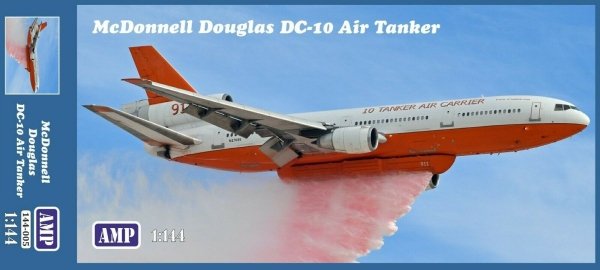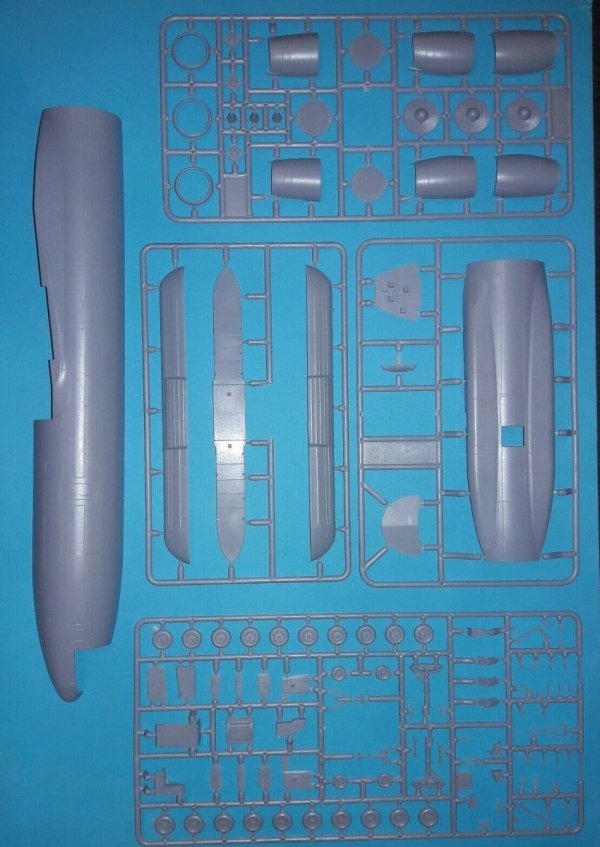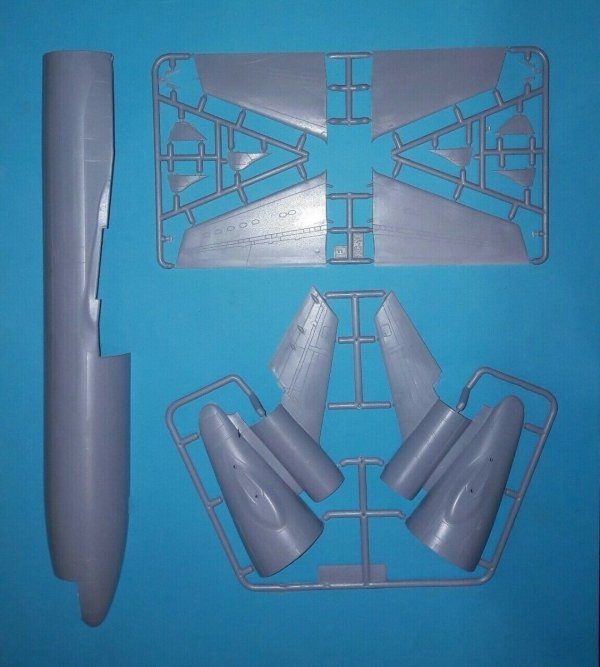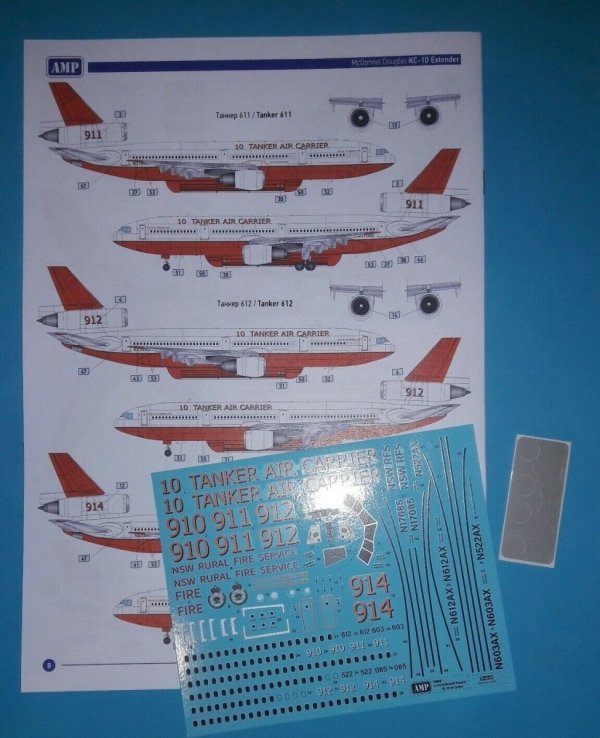-
Załączniki bezpieczeństwa
Załczniki do produktuZałączniki dotyczące bezpieczeństwa produktu zawierają informacje o opakowaniu produktu i mogą dostarczać kluczowych informacji dotyczących bezpieczeństwa konkretnego produktu
-
Informacje o producencie
Informacje o producencieInformacje dotyczące produktu obejmują adres i powiązane dane producenta produktu.AMP
-
Osoba odpowiedzialna w UE
Osoba odpowiedzialna w UEPodmiot gospodarczy z siedzibą w UE zapewniający zgodność produktu z wymaganymi przepisami.
AMP 14405 McDonnell Douglas DC-10 Air Tanker 1/144
Skala 1/144
Plastikowy model do sklejania. Zestaw nie zawiera kleju ani farb.
McDonnell Douglas DC-10 – trójsilnikowy samolot średniego i dalekiego zasięgu, produkowany przez przedsiębiorstwo McDonnell Douglas. Porównywany do Airbusa A300, Boeinga 747 i Lockheed L-1011 TriStar. DC-10 został wyprodukowany w liczbie 446 egzemplarzy, natomiast w aktywnej służbie pozostaje 168 sztuk (38%). W United States Air Force jako latające cysterny służy 59 KC-10 Extender. Samolot ten był pierwszym wspólnym dziełem po połączeniu się McDonnell Aircraft Corporation i Douglas Aircraft Company w jedno przedsiębiorstwo, przeznaczonym na rynek cywilny. Powstał na zlecenie American Airlines, która zapragnęła posiadać samolot mniejszy od Boeinga 747, ale o podobnym zasięgu i mogącego startować z mniejszych lotnisk. Przedsiębiorstwo sprostało wymaganiom zleceniodawcy tworząc właśnie DC-10.
Swój pierwszy lot DC-10 odbył 29 sierpnia 1970 roku i wszedł na rynek już rok później, tuż przed samolotem Lockheed L-1011 TriStar, który jest bardzo podobny pod względem parametrów. Pierwszymi odbiorcami byli United Airlines i American Airlines.
Pierwsza wersja DC-10 seria 10 (zwana domestic) o zasięgu 6112 km. Seria 30 miała znacznie zwiększony zasięg 10010 km, a z maksymalnym ładunkiem 7415km. Natomiast seria 40 dysponowała zasięgiem 9265 km przy normalnym załadunku i 7520 km przy maksymalnym. Jedną z najbardziej widocznych różnic było posiadanie przez serie 10 trzech kompletów podwozia, a 30 i 40 miała cztery. Dodatkowe dwa koła serie 30 i 40 otrzymały za sprawą zwiększonej ładowności.
Ostatni DC-10 z wyprodukowany egzemplarz zszedł z taśmy produkcyjnej w grudniu 1988 i został dostarczony na początku następnego roku.
The McDonnell Douglas DC-10 is an American wide-body airliner manufactured by McDonnell Douglas. The DC-10 was intended to succeed the DC-8 for long range flights. It first flew on August 29, 1970; and was introduced on August 5, 1971 by American Airlines.
The trijet has two turbofans on underwing pylons and a third one at the base of the vertical stabilizer. The twin aisle layout has a typical seating for 270 in two classes. The initial DC-10-10 had a 3,500 nmi (6,500 km) range for transcontinental flights, and the -15 had more powerful engines for hot and high airports. The -30 and -40 models had higher weights supported by a third main landing gear leg for an intercontinental range of up to 5,200 nmi (9,600 km). Based on the -30, The KC-10 Extender is a U.S. Air Force tanker.
A design flaw in the cargo doors caused a poor safety record in early operations. Following the American Airlines Flight 191 crash (the deadliest US aviation accident), the US Federal Aviation Administration (FAA) grounded all U.S. DC-10s in June 1979. In August 1983, McDonnell Douglas announced that production would end due to a lack of orders, as it had a widespread public apprehension after the 1979 crash and a poor fuel economy reputation.[3] Design flaws were rectified and fleet hours increased, for a safety record later comparable to similar era passenger jets.
Production ended in 1989, with 386 delivered to airlines along with 60 KC-10 tanker aircraft. The DC-10 outsold the similar Lockheed L-1011 TriStar. It was succeeded by the lengthened, heavier McDonnell Douglas MD-11. After merging with McDonnell Douglas in 1997, Boeing upgraded many in-service DC-10s as the MD-10 with a glass cockpit to eliminate the flight engineer position. In February 2014, the DC-10 made its last commercial passenger flight. Cargo airlines continue to operate it as a freighter, its largest operator is FedEx Express. The Orbis Flying Eye Hospital is a DC-10 adapted for eye surgery. Some DC-10s are on display, while other retired aircraft are in storage.


















 1 szt.
1 szt.
 2 szt.
2 szt.